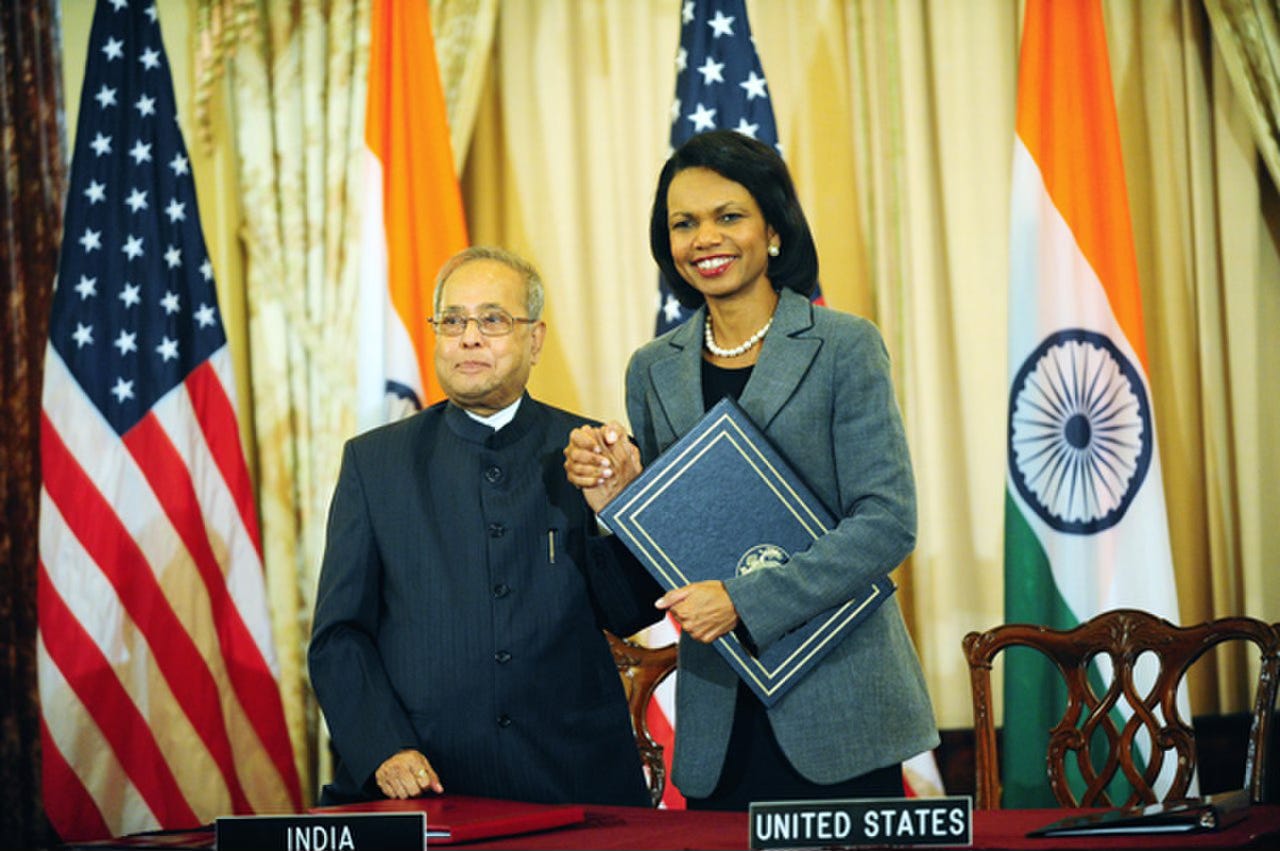A Defining Moment in US-India Relations
Seasoned diplomats recall the intricacies behind the US-India Civil Nuclear Agreement
The US-India Civil Nuclear Cooperation Initiative, launched in July 2005 during Prime Minister Manmohan Singh’s state visit to Washington, marked a pivotal moment in diplomatic relations between the US and India. The initiative was a complex and controversial undertaking, requiring years of focused effort, patience, and faith. David Mulford, US ambassador to India, 2004-2009, in his book, Forging Trust with India: The Dramatic Story of Achieving the US-India Civil Nuclear Agreement.
A Moment in Time in US-India Relations
The 2008 US-India Civil Nuclear Agreement was a defining moment in the analogs of diplomacy and statecraft between the US and India - and each of the panelists on stage on May 6th at the Hoover Institution on the Stanford University campus has played a role in either the delivery of the initiative or its ongoing articulation.1 Each has earned the accolade of an “august diplomat,” said moderator Anya Manuel, executive director, Aspen Strategy Group and in 2005, special assistant to the undersecretary for political affairs, Nick Burns.
What emerged over the course of the 90-minute conversation was the warmth of reminiscence among professionals - who to this day hold each other in high regard for what was accomplished in Washington, New Delhi, and across the distance. Some worked as counterparts, others as partners, and some occasionally as intellectual adversaries - but all on behalf of the effort to realize an agreement in the face of extraordinarily high stakes.
The 2005 US-India Nuclear Initiative
The topic of the conversation was the remarkable accomplishment of the US-India Civil Nuclear Cooperation Agreement2 which was initiated in July 2005 during a state visit to Washington by then Indian Prime Minister Manmohan Singh. Five of the six panelists on stage had been intimately engaged over the course of the next three-plus years in bringing the initiative to light. The sixth panelist, sitting US ambassador to India Eric Garcetti, is the self-acknowledged beneficiary of their accomplishments nearly three decades back.
Also on stage was Condoleezza Rice, President George W. Bush’s diplomat-in-chief as the 66th US secretary of state from 2005-2009, now director of the Hoover Institution. She was joined by Nick Burns, then undersecretary of state for political affairs and today US ambassador to China. Burns participated by live video feed. Former Ambassador Mulford also spoke. On the Indian side were M.K. Narayanan, national security advisor under Prime Minister Singh, 2005-2010, and Shivshankar Menon, who followed Narayanan as national security advisor, 2010-2014.
Clearly the stakes were high. Not only was the agreement controversial in both capitals of Washington and New Delhi, the international community was holding its collective breath over Washington’s proposal to resume nuclear trade with India, even though India had not relinquished its weapons.
The agreement also required approval by the US Congress, the Indian Parliament and the international Nuclear Suppliers Group, a voluntary group of 48 nations today, established in 1975 to collectively enforce nuclear non-proliferation. In the end, the agreement halted the US moratorium on nuclear trade with India; lent US assistance to India’s civilian nuclear energy program; and required that India separate its military and civilian nuclear reactors.




